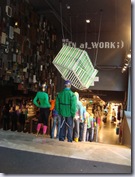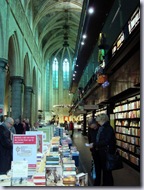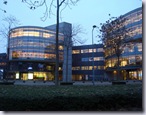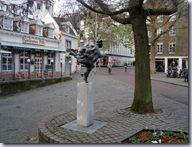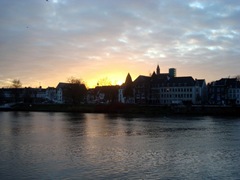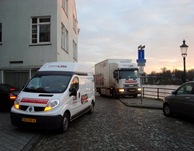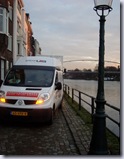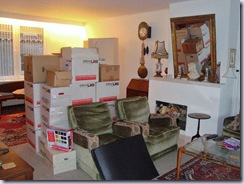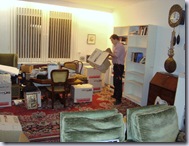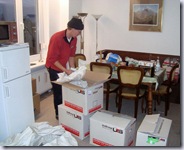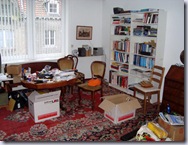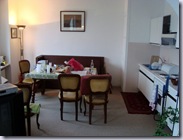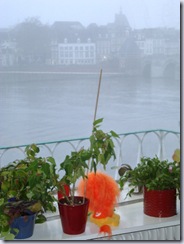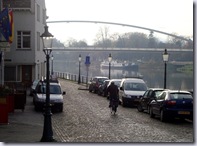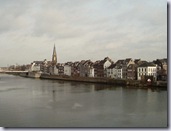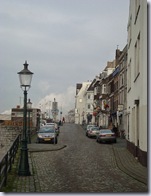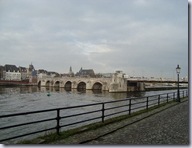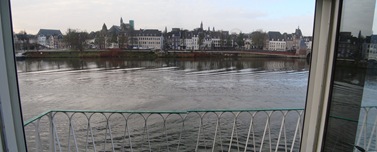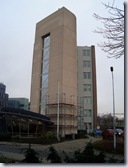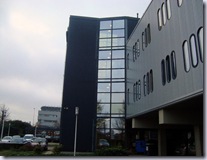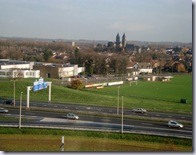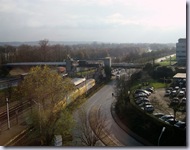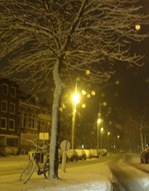 …And a happy Thanksgiving-feest to all the folks stateside!
…And a happy Thanksgiving-feest to all the folks stateside!
It’s been hard to find a Thanksgiving dinner venue here in the Netherlands. I’m a bit surprised: I would have expected a larger (or more organized) expatriate community in a university town like Maastricht.
The Hard Rock is serving all day in Amsterdam and all weekend in Cologne (‘traditional turkey dinner with all the trimmings in a great atmosphere), and the American Amsterdam Business Club is offering “a full selection of Thanksgiving food favorites and live entertainment to make this a Thanksgiving to remember” for 85 euro a head. The Netherlands Fulbright Alumni Association offers dinner and a lecture for 50 euro (“Dutch Secretary of State for Foreign Affairs, Mr. Maxime Verhagen, will speak on the topic of transatlantic relations after the US elections.”), and the Cafe Shamrock is offering Thanksgiving for an inexplicable 8 euro (“turkey, mashed potatoes, cranberries, a beer, and a good time”).
And that seems to be about it, really not much. Maybe I should look outward to Belgium for traditional frites, moules, and beer on tap...
Or maybe not, because Thanksgiving was always a family holiday.
When I was young, we’d head over to my grandparents early to prepare the turkey. I remember my grandfather creating dressing with a traditional grinder that he fed with an amazing assortment of meats, eggs, breads, and herbs to create the dressing. I still have the recipe but I haven’t been able to make it successfully in years (it’s funny how some recipes just start to reliably fail…I have a fruitcake and a brownie recipe that have suffered the same fate).
As a teen, the pleasure was in joining a flawlessly choreographed creation of a dozen dishes. Tradition was having a marshmallow crust on the sweet potatoes, almond in the green beans, little red candied apples. The pumpkin pies were a big tradition, and there was always a few slices of favored mince pie for me. We always toasted the turkey with a round of wine at noon to celebrate getting dinner launched on time, then were off to the ski slopes for the afternoon.
Early with my wife, it was an occasion for travel from the deserts of eastern Washington to the Oregon coast for a few days of civilization. We would go for a city dinner in Portland, some beach time near Newport, and a jump on Christmas shopping at Washington Square.
After the children arrived, we replicated our family celebrations, creating traditions around people’s favorite dishes. It was an evening for sometimes having friends and family over to share dinner, and always an occasion to use the formal dishes in the dining room. I remember the hours of getting the meat off the turkey, cleaning up the glassware by hand, calling it a night with the last of the wine around midnight.
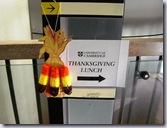
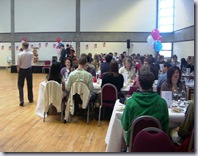
During my year at Cambridge, a Thanksgiving celebration was held in mid-afternoon sponsored for all of the expatriates by the Boston alumni of the University. There was turkey sausage in bacon, lots of wine, abundant 4th of July flag decorations. The vice chancellor gave a toast, acknowledging that the British didn’t understand Thanksgiving ,weren’t sure that they approved of it, recognized that we were all sad to be away from home. However, she encouraged each of us to try to have a happy Thanksgiving. Our table passed around another bottle of wine to toast that sentiment and hoped that there wouldn’t be dancing.
Family is scattered this Thanksgiving, more than any other I remember, but thoughts will remain close. We’ll make calls and send good wishes, laugh about stories of soggy pies and dry turkeys and dressing that never gelled (although my cranberries are infallible). And we’ll remember all of the things we have to be thankful for, my parent’s health a special joy this year.
Labels: Family, Personal reflections
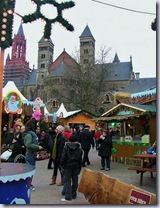 The Maastricht city Christmas market opened today, a collection of huts filling the main square. The best part will be the big Ferris Wheel that can be seen from all over town.
The Maastricht city Christmas market opened today, a collection of huts filling the main square. The best part will be the big Ferris Wheel that can be seen from all over town.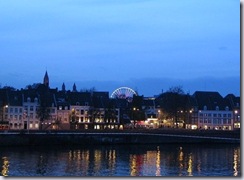 The Markets get into full swing in the coming days: here are a couple of pointers to a good index of locations, dates, and attractions at Christmasmarkets.com, and to a ‘Top-10’ review that matches my own experiences at travelintelligence. And the Maastricht Market runs through New Year’s.
The Markets get into full swing in the coming days: here are a couple of pointers to a good index of locations, dates, and attractions at Christmasmarkets.com, and to a ‘Top-10’ review that matches my own experiences at travelintelligence. And the Maastricht Market runs through New Year’s.
